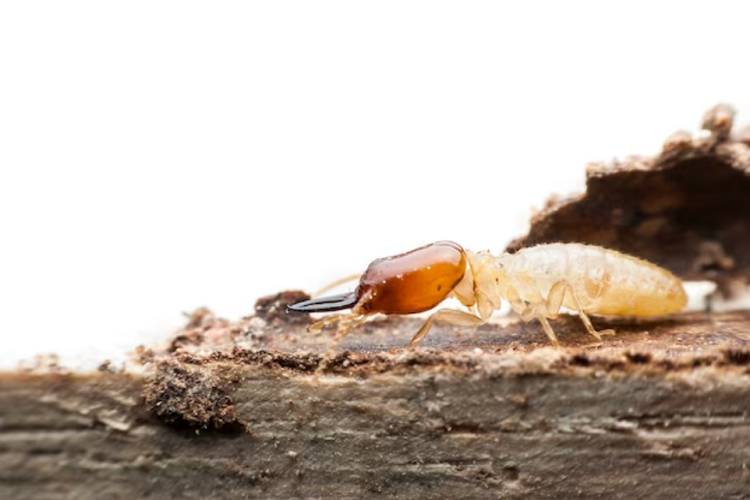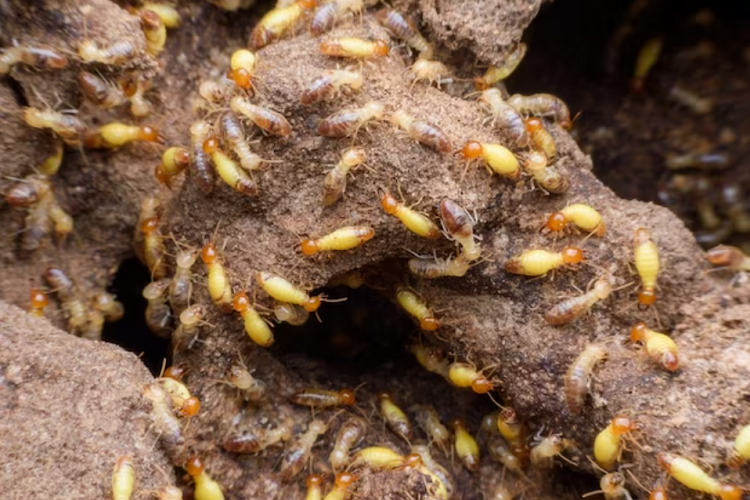They may be tiny, but microscopic pests can have an enormous impact. While invisible to the naked eye, these minuscule menaces cause vast agricultural destruction, spread disease, and damage ecosystems.
In this article, we’ll examine the outsized damage caused by minuscule pests, and how understanding these tiny terrors enables better protection of our crops, homes, and environment.

What Are Microscopic Pests?
Microscopic pests are tiny insects, mites, and other creatures that wreak havoc despite their small size. Measuring just millimeters or less, common kinds of these include spider mites, dust mites, thrips, and aphids. Though barely visible, a single leaf can contain hundreds of these tiny bugs. Fast reproduction allows their populations to explode rapidly.
Aphids, for example, can produce up to 12 new nymphs daily. While they seem harmless due to their size, some estimates suggest that 10-20% of global crop yields are lost to microscopic invaders annually. Combined with disease transmission and environmental harm, their impact is disproportionately large compared to their tiny frames.
Where Do They Come From?
Microscopic pests have adapted over millennia to thrive at tiny sizes. Mites likely evolved from an aquatic ancestor, developing hard outer coverings and minute sizes to survive dry conditions. Other microscopic arthropods like thrips evolved with wings to disperse quickly. Flooding can also enable the spread of pests when standing water from clogged canals and drains allows mosquitoes to breed rapidly.
Modern transportation enables these pests to spread rapidly to new regions. Aphids fly on wind currents, hitch rides on animals, and stow away in human cargo. Spider mites also travel by wind while adventurous dust mites passively move from house to house on clothing and other objects.
Specific environments like greenhouses and indoor homes offer ideal conditions for populations to multiply. The combination of adaptable life cycles, high reproduction, and human transport means they can turn up anywhere.
Major Types
Spider mites and dust mites are common mite species measuring under 1 mm long. Spider mites feed on plants, destroying crops and spreading disease. Dust mites consume human skin cells and microbes, triggering allergies. Thrips are winged insects under 2 mm long that pierce and feed on plants.

Common thrips species attack vegetables, flowers, and fruit trees. Aphids are soft-bodied insects under 1/10th inch long that use sucking mouthparts to feed on plant sap. Nearly 250 species target agricultural crops, stunting growth and acting as disease vectors. Though all tiny in size, these pests damage crops, gardens, and indoor spaces in myriad ways.
The Challenge of Detection
One of the greatest difficulties with managing microscopic pests is detecting their presence before populations have exploded. Due to their tiny size and hidden habitats, mites, thrips, aphids, and other minuscule invaders often evade detection in the early stages of infestation.
This allows their numbers to proliferate unseen, leading to entrenched infestations and visible plant damage before they are discovered.
- Microscopic pests hide in obscure places like leaf undersides, buds, and high up in trees.
- Populations can spike rapidly before any visible symptoms appear.
- Their tiny size enables them to escape casual notice.
- Regular close inspection of plants with lenses/traps allows early detection.
- Monitoring entry points gives warning on new invasive species.
- Their stealthy nature makes detection before multiplication difficult.
The challenge of pinpointing them before their populations surge remains one of the biggest obstacles to effective control and management. Early detection paves the way for quicker action to protect plants, crops, and homes from these tiny threats.
The Damage They Cause
The agricultural industry categorizes mites, thrips, aphids, and other microscopic arthropods as major crop pests. Billions of dollars are lost annually to damaged produce and lowered yields. Spider mites stunt citrus trees, thrips distort flowers and vegetables, and wooly aphids kill conifers.
These pests also spread debilitating plant diseases. Outdoors, they disrupt native plant communities and food webs. Indoors, dust mites trigger allergic reactions and asthma in humans. Their small size enables populations to expand rapidly and makes control difficult.
Countries implement quarantines and inspections to limit these little tiny pests, but inadvertent transportation enables them to bypass barriers. Unchecked, these minuscule pests become mighty forces of destruction.
Controlling Microscopic Pests
Regular inspection of plants and indoor spaces allows early detection of infestations before they escalate. Consulting local pest control services can provide monitoring guidance and control recommendations tailored to the specifics of an infestation.
Natural predatory mites and insects can be introduced to consume pest mites and insects. Beneficial nematodes and fungus pathogens also help suppress populations. Pesticides carry certain risks if improperly applied but may become necessary to reduce large infestations. However, pests can develop resistance to chemicals if overused.
Integrated pest management combines monitoring, biological control, pesticides, and prevention tactics in a sustainable manner. Consistent vigilance and varied control methods are needed to combat the resilient, prolific nature of these tiny pests.
What’s in It for Them in the Future?
Climate change enables microscopic pests to spread more easily as warmer conditions expand habitable regions. Researchers expect mites, thrips, and other pests to invade new areas as temperatures rise. Developing countries face increasing crop losses due to microscopic invaders.
While pesticides help control outbreaks, overuse risks environmental damage and resistance. New biological insecticides using viruses or fungi offer a promising non-chemical alternative. Scientists also study pests’ genetics and chemical cues to disrupt reproduction and feeding behaviors.
Continued research into integrated solutions will provide sustainable defenses against these tiny threats. But these pests will remain a mighty force requiring ongoing vigilance and management.
The Takeaway
Microscopic pests may be small, but they pose enormous risks to agriculture, buildings, and human health worldwide. Learning about their biology and control methods empowers us to protect our homes, crops, and environment from these tiny terrors. With diligence and research, we can defend against their mighty damage.



